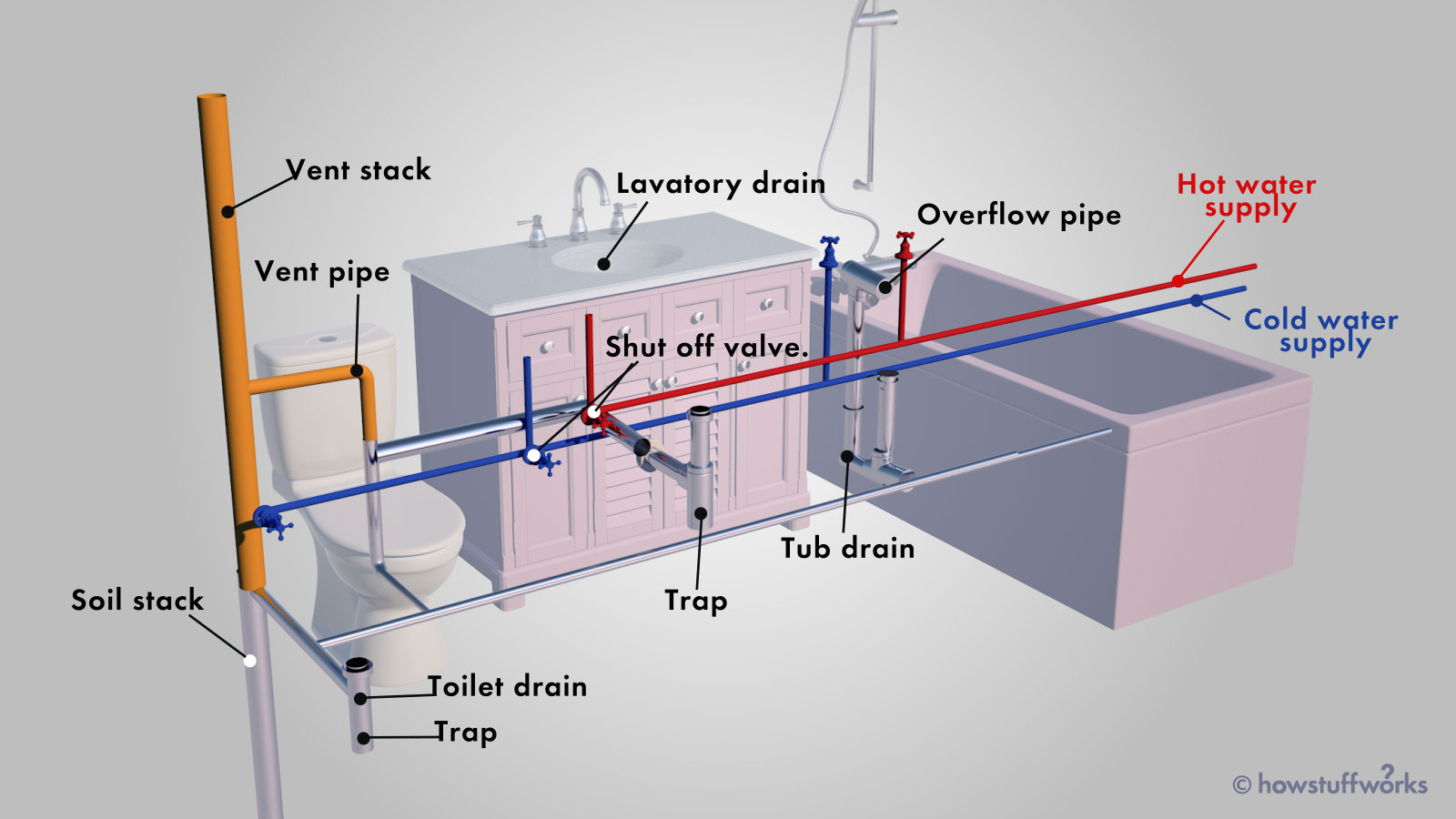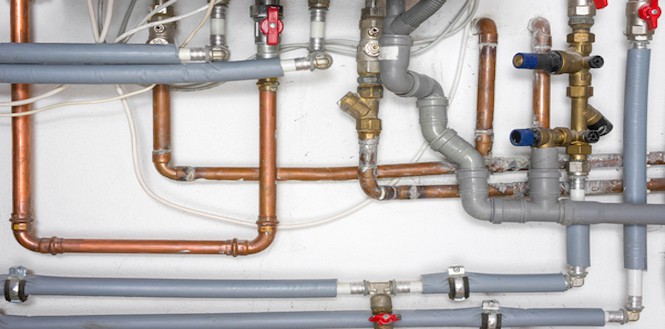Exploring The Layout of Your Property's Plumbing System
Exploring The Layout of Your Property's Plumbing System
Blog Article
Are you trying to locate additional info involving Plumbing Installation 101: All You Need to Know?

Comprehending how your home's plumbing system works is crucial for each homeowner. From providing tidy water for drinking, cooking, and bathing to securely getting rid of wastewater, a properly maintained plumbing system is important for your family members's health and convenience. In this thorough guide, we'll explore the complex network that makes up your home's plumbing and deal suggestions on upkeep, upgrades, and managing common concerns.
Introduction
Your home's pipes system is greater than simply a network of pipelines; it's a complicated system that ensures you have access to clean water and efficient wastewater elimination. Recognizing its elements and how they interact can aid you stop expensive repairs and make sure every little thing runs efficiently.
Fundamental Components of a Pipes System
Pipelines and Tubes
At the heart of your plumbing system are the pipes and tubes that bring water throughout your home. These can be made of numerous materials such as copper, PVC, or PEX, each with its benefits in terms of longevity and cost-effectiveness.
Fixtures: Sinks, Toilets, Showers, and so on.
Fixtures like sinks, commodes, showers, and bath tubs are where water is used in your home. Understanding exactly how these components link to the plumbing system assists in identifying troubles and planning upgrades.
Valves and Shut-off Points
Shutoffs regulate the flow of water in your pipes system. Shut-off valves are essential throughout emergencies or when you need to make repair work, permitting you to isolate parts of the system without interfering with water flow to the entire residence.
Water Supply System
Main Water Line
The major water line attaches your home to the municipal water system or an exclusive well. It's where water enters your home and is distributed to different components.
Water Meter and Stress Regulatory Authority
The water meter actions your water usage, while a pressure regulatory authority makes certain that water flows at a safe pressure throughout your home's plumbing system, avoiding damages to pipes and fixtures.
Cold Water vs. Warm water Lines
Understanding the distinction in between cold water lines, which provide water straight from the primary, and hot water lines, which lug heated water from the hot water heater, assists in troubleshooting and planning for upgrades.
Drain System
Drain Pipes Piping and Traps
Drain pipelines carry wastewater far from sinks, showers, and toilets to the sewer or sewage-disposal tank. Traps avoid drain gases from entering your home and also trap debris that might trigger obstructions.
Air flow Pipelines
Air flow pipes allow air right into the water drainage system, preventing suction that could slow down drain and create traps to vacant. Appropriate air flow is crucial for keeping the honesty of your pipes system.
Importance of Proper Drainage
Ensuring correct drain prevents backups and water damage. Regularly cleansing drains pipes and preserving traps can prevent costly repairs and expand the life of your pipes system.
Water Heater
Sorts Of Hot Water Heater
Water heaters can be tankless or standard tank-style. Tankless heaters warmth water on demand, while tanks keep heated water for instant use.
Exactly How Water Heaters Connect to the Plumbing System
Recognizing how hot water heater attach to both the cold water supply and warm water circulation lines assists in diagnosing issues like not enough warm water or leaks.
Maintenance Tips for Water Heaters
Regularly purging your hot water heater to eliminate sediment, inspecting the temperature setups, and inspecting for leakages can prolong its life expectancy and improve power effectiveness.
Usual Pipes Issues
Leakages and Their Reasons
Leaks can take place because of aging pipes, loosened installations, or high water stress. Resolving leaks promptly stops water damages and mold development.
Clogs and Clogs
Blockages in drains and bathrooms are often brought on by purging non-flushable items or a build-up of oil and hair. Utilizing drainpipe displays and being mindful of what goes down your drains pipes can avoid blockages.
Signs of Pipes Problems to Expect
Low water stress, slow drains pipes, foul odors, or unusually high water expenses are signs of prospective plumbing issues that should be attended to immediately.
Plumbing Upkeep Tips
Regular Assessments and Checks
Set up annual pipes evaluations to capture issues early. Try to find indicators of leaks, deterioration, or mineral buildup in taps and showerheads.
Do It Yourself Upkeep Tasks
Simple jobs like cleaning faucet aerators, looking for commode leaks making use of color tablets, or protecting subjected pipelines in chilly environments can protect against major pipes issues.
When to Call a Specialist Plumbing Technician
Know when a pipes issue needs specialist proficiency. Trying complicated fixings without proper understanding can bring about more damages and higher repair service expenses.
Updating Your Pipes System
Reasons for Upgrading
Upgrading to water-efficient fixtures or replacing old pipes can boost water top quality, minimize water costs, and raise the worth of your home.
Modern Plumbing Technologies and Their Advantages
Check out technologies like clever leak detectors, water-saving toilets, and energy-efficient hot water heater that can save money and decrease environmental effect.
Expense Factors To Consider and ROI
Compute the upfront prices versus long-term financial savings when considering plumbing upgrades. Many upgrades pay for themselves with decreased energy expenses and fewer repair work.
Ecological Effect and Conservation
Water-Saving Fixtures and Home Appliances
Installing low-flow faucets, showerheads, and toilets can considerably minimize water usage without sacrificing efficiency.
Tips for Reducing Water Use
Simple habits like fixing leakages without delay, taking much shorter showers, and running complete tons of washing and meals can conserve water and reduced your utility costs.
Eco-Friendly Pipes Options
Take into consideration lasting pipes materials like bamboo for floor covering, which is durable and eco-friendly, or recycled glass for kitchen counters.
Emergency situation Readiness
Actions to Take During a Plumbing Emergency situation
Know where your shut-off valves are located and just how to shut off the supply of water in case of a ruptured pipeline or major leak.
Relevance of Having Emergency Contacts Useful
Keep contact details for neighborhood plumbings or emergency situation services readily offered for quick response throughout a plumbing crisis.
Do It Yourself Emergency Situation Fixes (When Applicable).
Temporary repairs like utilizing duct tape to spot a dripping pipe or placing a pail under a dripping tap can reduce damage until an expert plumbing technician gets here.
Conclusion.
Understanding the composition of your home's plumbing system empowers you to keep it properly, conserving time and money on repair work. By following regular upkeep regimens and remaining informed about modern-day plumbing innovations, you can ensure your pipes system operates effectively for years to come.
HOW YOUR PLUMBING SYSTEM WORKS
Which Pipes Do What?
Blue lines = fresh water supply entering the building
Red lines = hot water supply entering the building
Grey lines = pipes carrying waste away from the building and venting pipes carrying gases away from the building (through the roof)
YOUR MAIN PLUMBING SYSTEMS
There are two main plumbing systems that support your home s basic plumbing needs one that brings clean water into your home, and one that sends dirty water away from your home. Connected to the toilet, bath, shower, and other faucets in your home, these two systems keep your water flowing in the right directions.
ACCESSING FRESH WATER
Fresh and clean water is brought into your home through the main water supply line . Filtered through one pipe, this water is pressured to flow into the various fixtures in your home at any given time.
This water can be sourced from a well located on your property, a pond or river (mostly cottages), or, as in most cases, from the city s municipal water treatment centre. However, it is important to note that water that is untreated, such as the water siphoned from ponds or rivers, may not be safe to drink. Personal water supplies always need to be treated for hardness and contaminants before consumed.
MUNICIPAL WATER SUPPLIES
Improve taste and odour
Remove sediment
Eliminate hardness
Reduce chlorine
COLD WATER SUPPLY VS. HOT WATER SUPPLY
Cold water flows into your home or building through the service line, which then distributes hot or cold water to your fixtures. This line is most commonly run through a central column that runs floor to floor. Hot water runs in short and straight pipes as the longer the pipeline, the more heat that will be lost in the transfer. Having shorter pipes also allows residents to access hot water more quickly.
WASTE WATER SYSTEM
Your wastewater system is divided into two parts pipes that send wastewater away from your home and venting pipes that send sewer gas away from your home. Sewage water travels through pipes that flush the water and waste towards local sewers that are operated and managed by your city or town. Most sewer systems rely on gravity to move the wastewater to where it needs to go.
The further away from your toilet or sink, the larger wastewater pipes become. This allows for waste to be disposed of from various parts of your home or business at once without pipe blockages. The angle and flow of these pipes are also essential for keeping your waste pipes clear of build up.
https://harrisplumbing.ca/how-your-home-plumbing-system-works/

HOW YOUR PLUMBING SYSTEM WORKS
Which Pipes Do What?
YOUR MAIN PLUMBING SYSTEMS
There are two main plumbing systems that support your home s basic plumbing needs one that brings clean water into your home, and one that sends dirty water away from your home. Connected to the toilet, bath, shower, and other faucets in your home, these two systems keep your water flowing in the right directions.
ACCESSING FRESH WATER
Fresh and clean water is brought into your home through the main water supply line . Filtered through one pipe, this water is pressured to flow into the various fixtures in your home at any given time.
This water can be sourced from a well located on your property, a pond or river (mostly cottages), or, as in most cases, from the city s municipal water treatment centre. However, it is important to note that water that is untreated, such as the water siphoned from ponds or rivers, may not be safe to drink. Personal water supplies always need to be treated for hardness and contaminants before consumed.
MUNICIPAL WATER SUPPLIES
COLD WATER SUPPLY VS. HOT WATER SUPPLY
Cold water flows into your home or building through the service line, which then distributes hot or cold water to your fixtures. This line is most commonly run through a central column that runs floor to floor. Hot water runs in short and straight pipes as the longer the pipeline, the more heat that will be lost in the transfer. Having shorter pipes also allows residents to access hot water more quickly.
WASTE WATER SYSTEM
Your wastewater system is divided into two parts pipes that send wastewater away from your home and venting pipes that send sewer gas away from your home. Sewage water travels through pipes that flush the water and waste towards local sewers that are operated and managed by your city or town. Most sewer systems rely on gravity to move the wastewater to where it needs to go.
The further away from your toilet or sink, the larger wastewater pipes become. This allows for waste to be disposed of from various parts of your home or business at once without pipe blockages. The angle and flow of these pipes are also essential for keeping your waste pipes clear of build up.
https://harrisplumbing.ca/how-your-home-plumbing-system-works/
I am very taken with The Inner Workings of Your Home's Plumbing and I really hope you liked the article. Sharing is caring. Helping others is fun. We appreciate your readership.
Visit Site Report this page